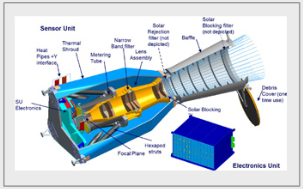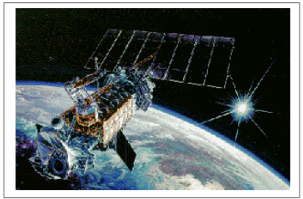
By placing lightning sensors in space, we obtain measurements over a greater portion of the Earth, proving many times more data than if using only ground-based or airborne sensors. Most ground-based and airborne lightning sensors are only capable of detecting cloud-to-ground lightning, which is known to make up only about 25% of all lighting activity. In addition, ground sensors can only detect activity over land, and airborne sensors have a limited observation time and space. With the use of space-based lightning sensors, we can now measure all forms of lightning over both land and sea, 24 hours a day.
Observations from instruments such as the Optical Transient Detector (OTD), the Lightning Imaging Sensor (LIS), and the Geostationary Lightning Mapper (GLM) have allowed for development of a global database of lightning activity. Such information has proven useful for severe storm detection and analysis and for lightning-atmosphere interaction studies.
Lightning Imaging Sensor (LIS)

There are two LIS instruments, one on TRMM and another on the International Space Station (ISS). LIS can detect lightning during both day and night with a high detection efficiency. The region of coverage is tropical (TRMM LIS) for 1997 to 2015 and tropical and mid-latitudes (ISS LIS) from 2017 onward.
Geostationary Lightning Mapper (GLM)

The GLM is a single-channel, near-infrared optical transient detector that is onboard the GOES-16 geostationary satellite. The geostationary orbit allows for continuous lightning observations that can lead to better "nowcasting" of lightning and severe storms.
Optical Transient Detector (OTD)

OTD was the first detector in space that operated from 1995 to 2000. The instrument could detect the distribution and variability of total lightning.
Historically, the Space Shuttle was used as a platform for lightning studies.
Operational Linescan System (OLS)

In the 1970s - 1990s, maps of global night-only lighting activity were produced using the Operational Linescan System (OLS) sensor onboard several Defense Meteorological Satellite Program (DMSP) satellites.
Have you used our data? Register for updates